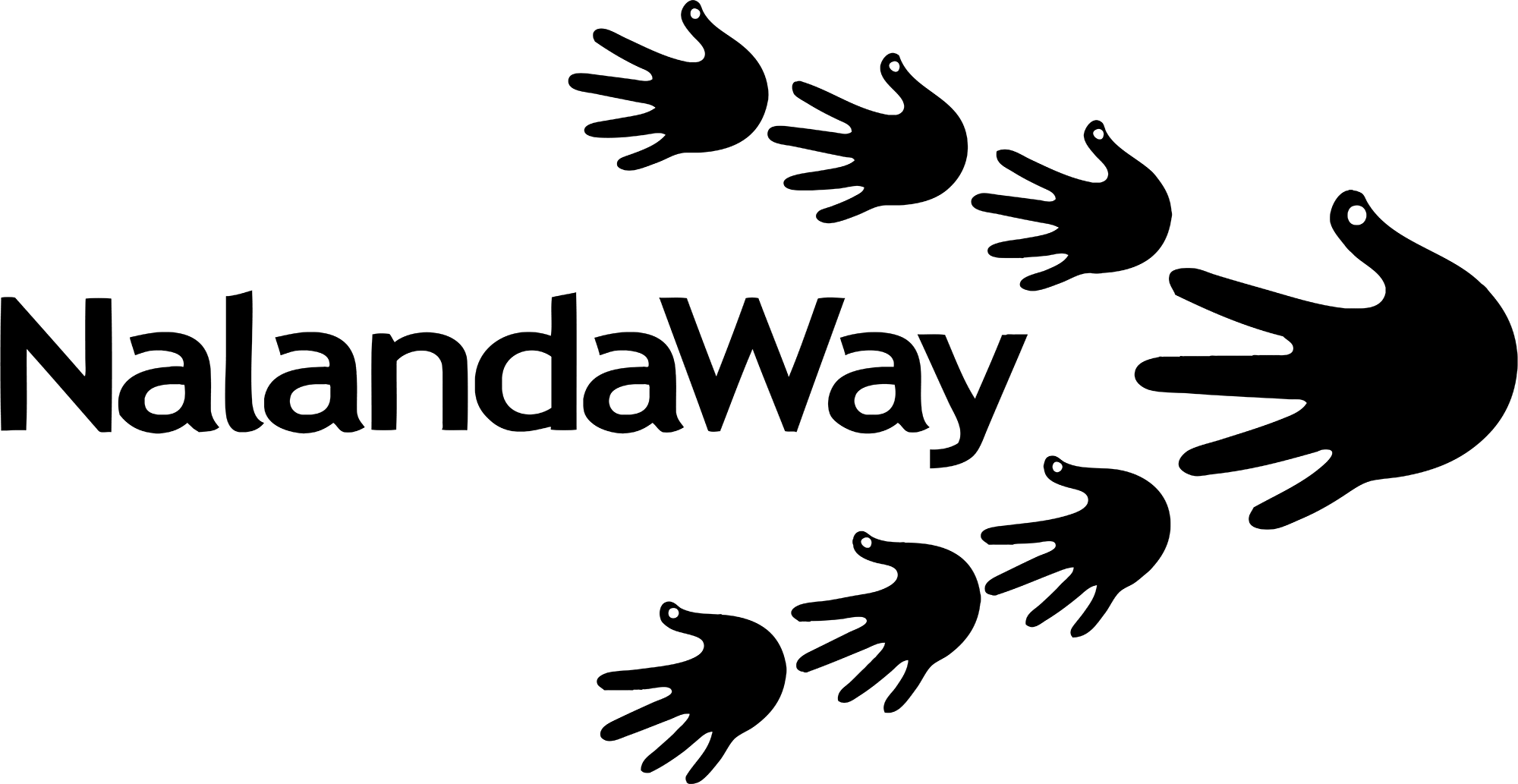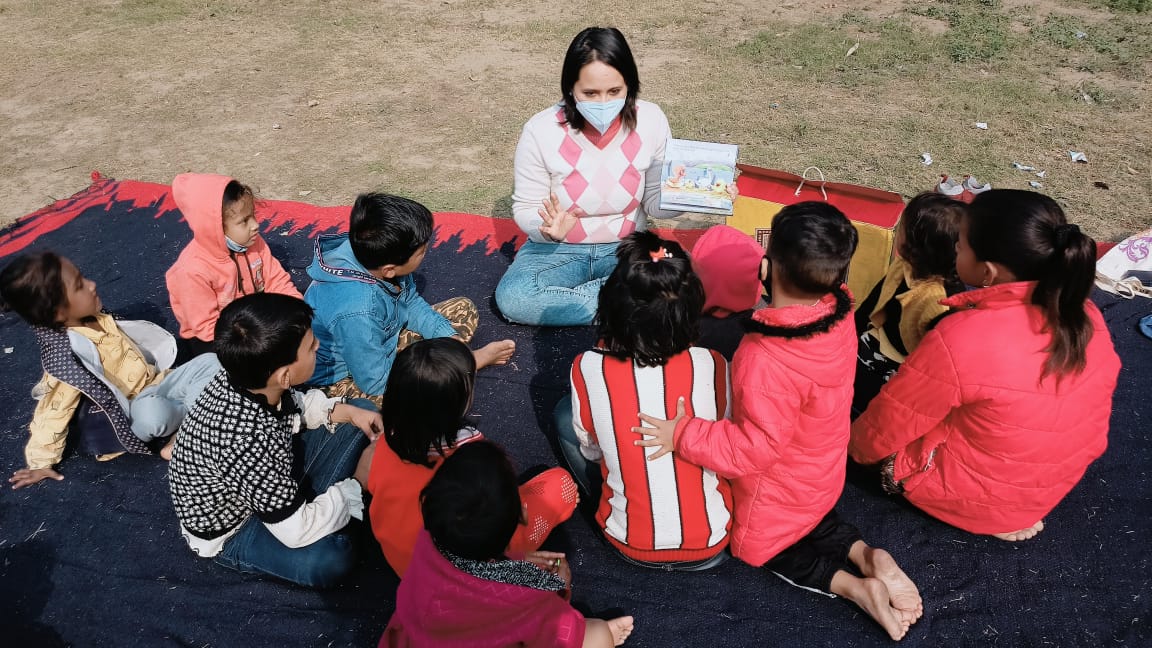
“Once more!”
“Tell me another!”
A child refusing to leave the fantasy land of double rainbows and magical mountains would utter these words towards the end of a bedtime tale.
It’s impossible to fill a child’s insatiable want of getting lost in stories where they enjoy the freedom to visualise their world. Let’s dive a little deeper into the fascinating world of stories and look through the eyes of a young child.
Stories come naturally to humans and are intuitive to each child. They are not limited to a film script, a dramatic play, or a book; Stories are simply an idea or a situation connected together to create a thought flow or a feeling. Does it always need a beginning and a clear end? Not necessarily. If we expand our perspective, we’ll find that everything around us has a story. A flower, a mural, a poem, sounds, or just a memory in our heart—they all have stories to tell. To think of it, memories too are stories we tell ourselves, ain’t it?
Stories have existed since time immemorial and continue so! From the cave paintings in ancient times to the podcasts we hear on our smartphones, the mediums of storytelling have evolved manifolds. Some stories have travelled through time, for years forever. Some notable works of Asian origin are Arabian Nights and Panchatantra, translated into various languages.
It is speculated that the Panchatantra stories were written to pass on the ‘wisdom of conduct of life’ to the three Prince(s) of a Kingdom in India.
A wise man offered the King the gift of teachings (Shiksha in Hindi) in return for alms given as charity (Bhiksha in Hindi). Something poetically interpreted by Gulzar in his versions of Panchatantra, translated in Hindi for his granddaughter in the audio series Bosky ka Panchatantra.
राजा बोला, “भिक्षा ले लो” – Raja bola “Bhiksha lelo” – The king said, “Take alms”
ब्राह्मण बोला, “शिक्षा ले लो!” – Brahman bola “Shiksha lelo” – The brahmin said, “Take education!”
And so began a series of stories, with animals that talk, magical lands, fools and kings. Folk tales and fables give us a scope to bring forth all that exists in the real world and the imagination. There is a slight risk of passing on views of what is right and what is not, allowing the listener to interpret the story on their own. Unless we conclude the story with a ‘moral’ disclaimer, that is! Something irresistible for adults when sharing a story with their children. We feel we must tell them what is right, what is not, and how honesty is the best policy no matter what! We fear our stories will make it or break it, while they are only meant to shake up the set thoughts, the value systems we believe to be unbreakable. Stories leave us a thought to ponder upon.
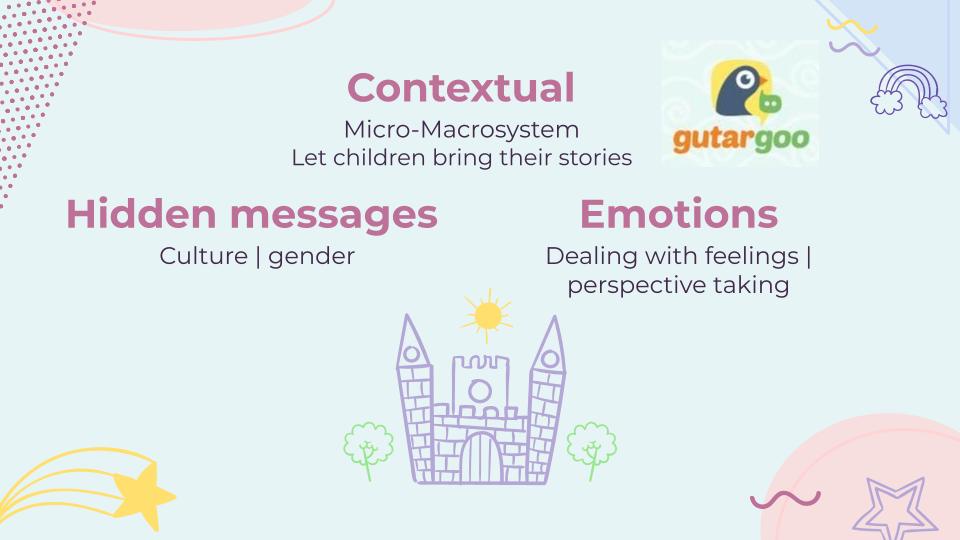
As storytellers, specifically for the NalandaWay Project Gutar Goo in collaboration with HCL, we needed to adapt the story according to our audiences, 3-6 year old Anganwadi children. We took inspiration from their everyday life, included familiar stories from Panchatantra and gave it a relatable twist. We added songs and rhymes with every episode, something that really spoke to our audience and stayed with them beyond the story they heard on the speakers. Check out the audio stories in Hindi here!
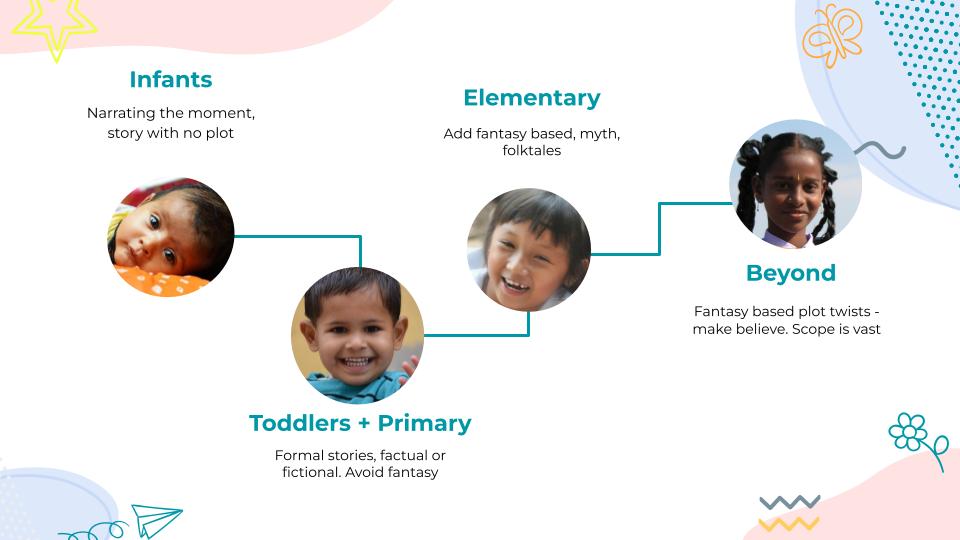
When planning a storytelling-based program/intervention for children, understanding the correlation between their development and the genre of storytelling is crucial. We can introduce storytelling for children as young as infants. It begins with a simple narration of what you see in your own words, using everyday objects as props and characters of your story. As children grow into the primary years, they are ready for more structured stories based on fiction and conversational relatable content.
The Montessori school of thought suggests that fantasy and imagination-based stories best be introduced in the elementary stage. As the child grows, the scope and style of storytelling can be more refined.
While these principles formed the basis for designing our content for the project, one of the challenges as a storyteller is to make the content contextual. In the context and content treatment analysis, there is a thin line between making it relatable vs sounding stereotypical.
This requires a deeper understanding, familiarity and sensitivity towards the community we are working with, especially When our target audiences are young children. For instance, a story depicting the mother of the child cooking food is relatable but also subtly promotes a set stereotype, here in our opening episode ‘Mil-Jul Kar’ (Together we can) depicts the mother as cooking (relatable content) while every member of the family (including all males) are supporting in the household chores (breaking a stereotype). This concludes with the child being involved and family supporting each other in everyday tasks.
One has to build the sensitivity and look much more closely, as this is the age and stage children are beginning to make meanings of their surroundings, including themselves and the family dynamics. Though our major objects are clearly in health-hygiene, language and math, we know that each listener will find the objective/ message that speaks most to them in the story they hear. That’s the power of storytelling! How we weave in our content wrapped around all these nuances is the art we continue to learn!
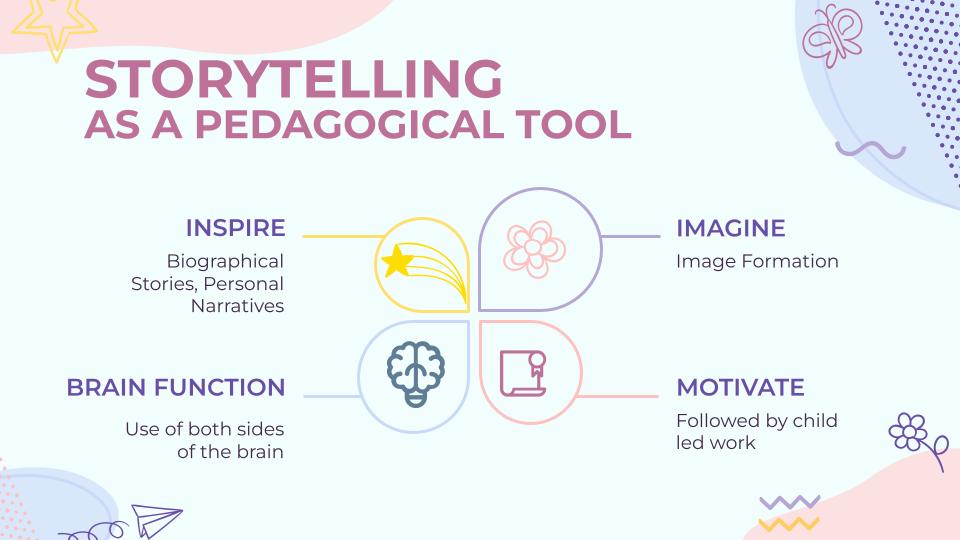
The storytelling approach in a classroom/ pedagogical setting has proven beneficial for various reasons. The power to inspire, build imagination and creativity is why Montessori and Waldorf pedagogy rely on Storytelling as a core methodology. The scope of repeating a story multiple times directly impacts the brain’s learning capacity. Contemporary science has proven that neural pathways are strengthened and “myelinated” when information and experiences are encountered repeatedly.
Take, for instance, the classic storytelling in a Waldorf school curriculum, introducing a mathematical concept using storytelling…
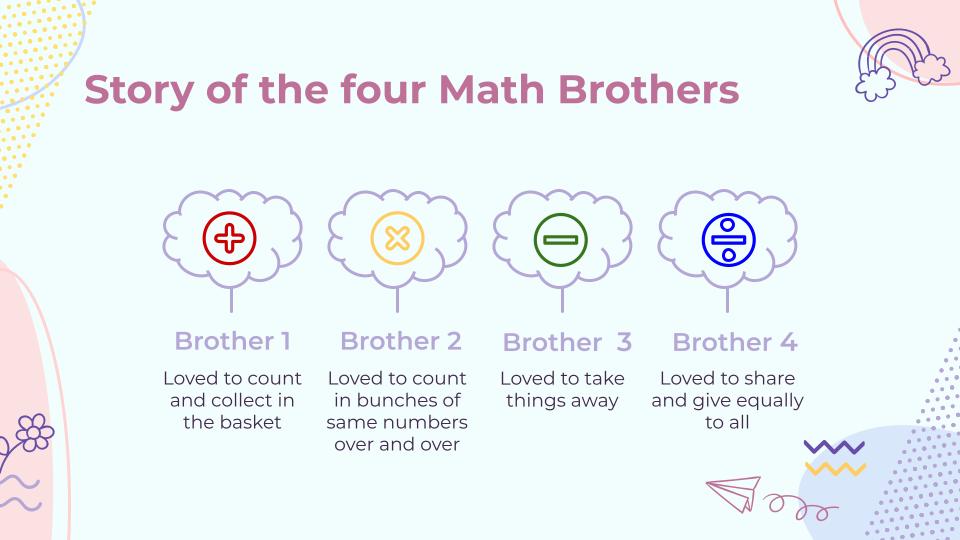
When we introduce concepts like a mathematical concept that appeals more to the left brain woven in a story that appeals more to the right part of the brain. This way, the child receiving the program is enthused and learning much more actively.
Storytelling in classrooms is an approach that can bring back the backbenchers to the front, build a learning environment for all to grow, make mixed-age classrooms a working possibility, and indeed create an opportunity to integrate different art forms in a session.
“Our aim is not merely to make the child understand, and still less to force him to memorize, but so to touch his imagination as to enthuse him to his innermost core.
We don’t want complacent children, but eager ones. We want to sow life in the child, and not theories.” – Maria Montessori
Written by Deepika Sharma, Practice Lead – Arts Integration at NalandaWay Foundation – She is a theatre enthusiast who integrates arts as a methodology for understanding and creating enabling environments for children across ages. She has collaborated with different organisations like UNICEF, WorldBank, CECED as a researcher, content writer, curriculum developer, and artist. She grew up listening to stories, and her love for stories continues to grow over the years!
